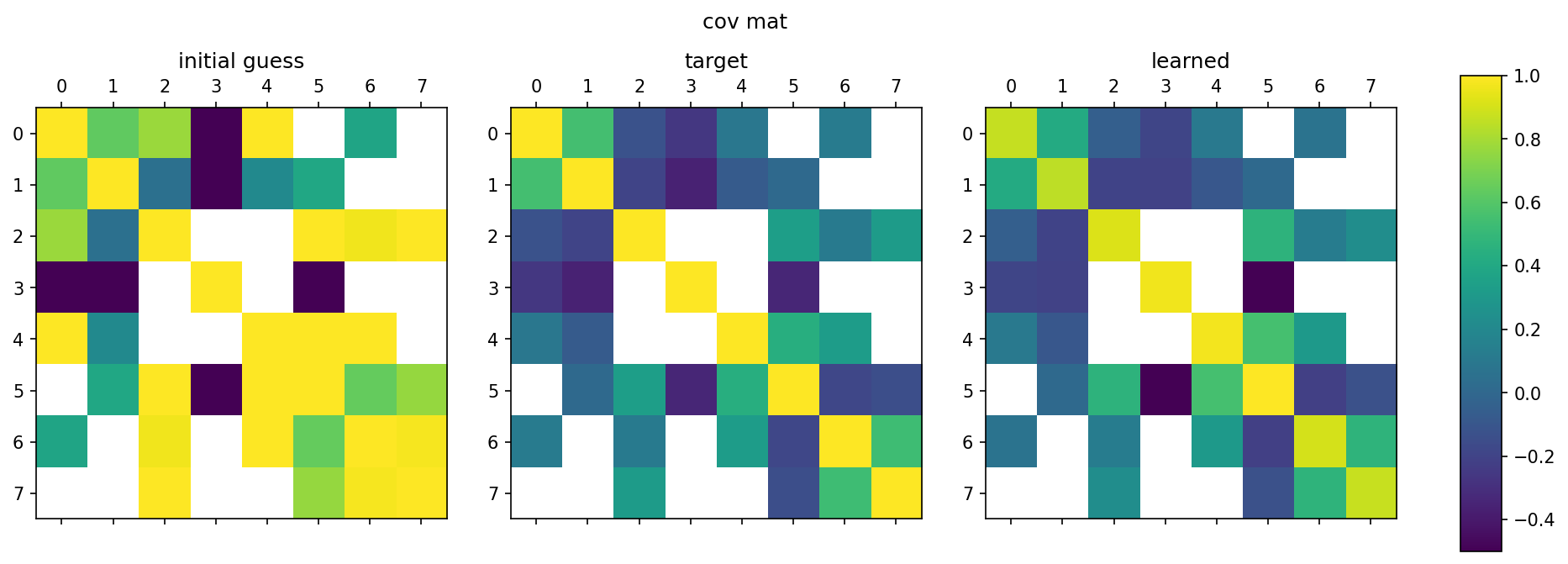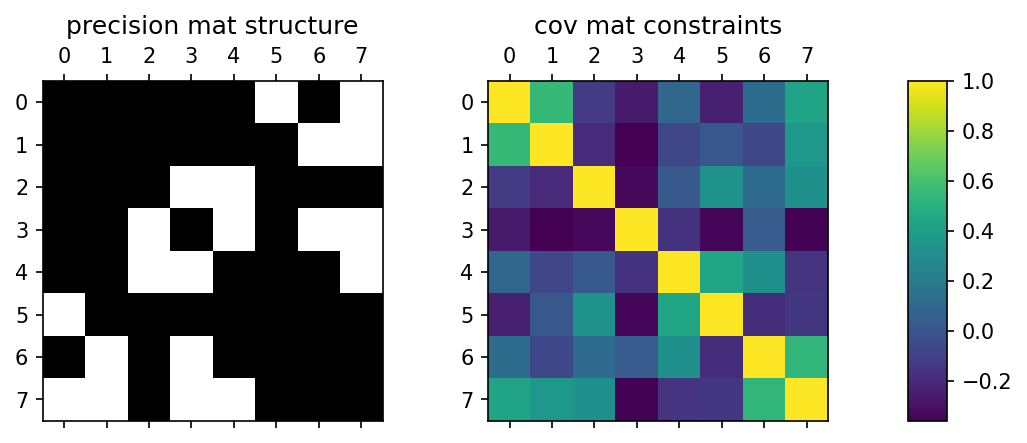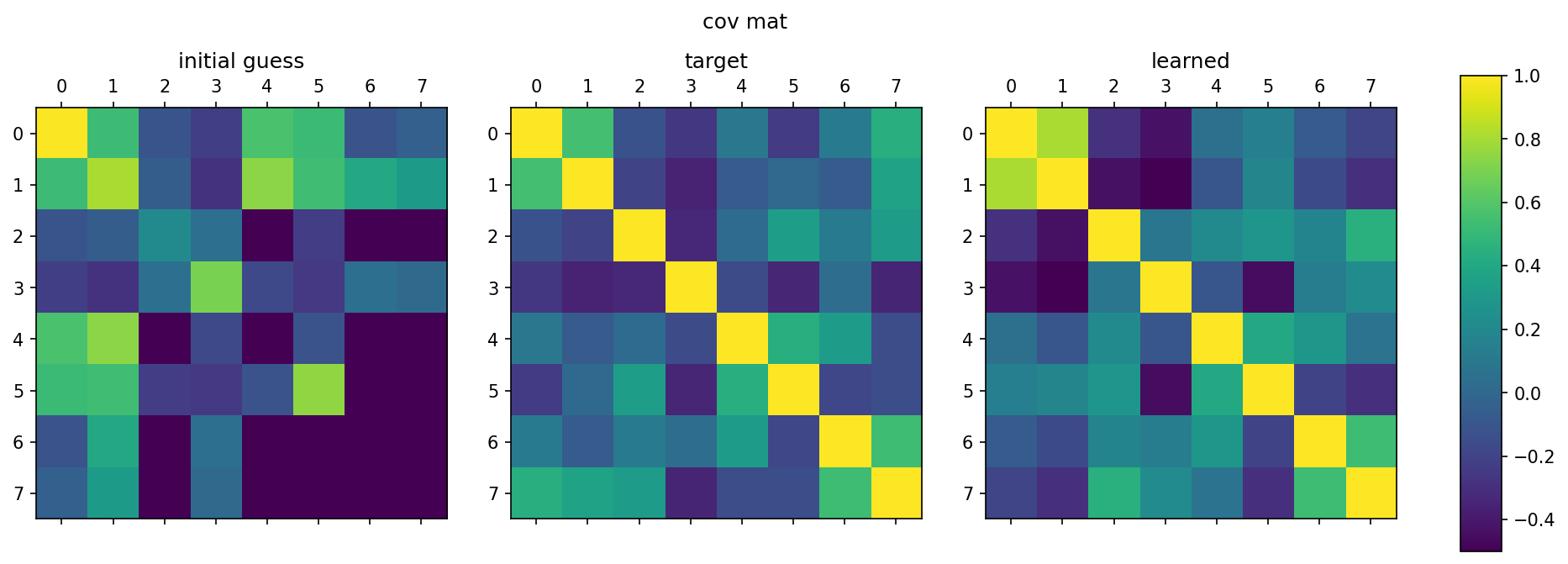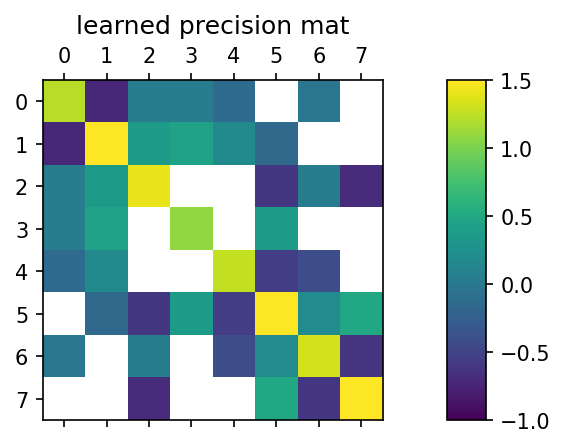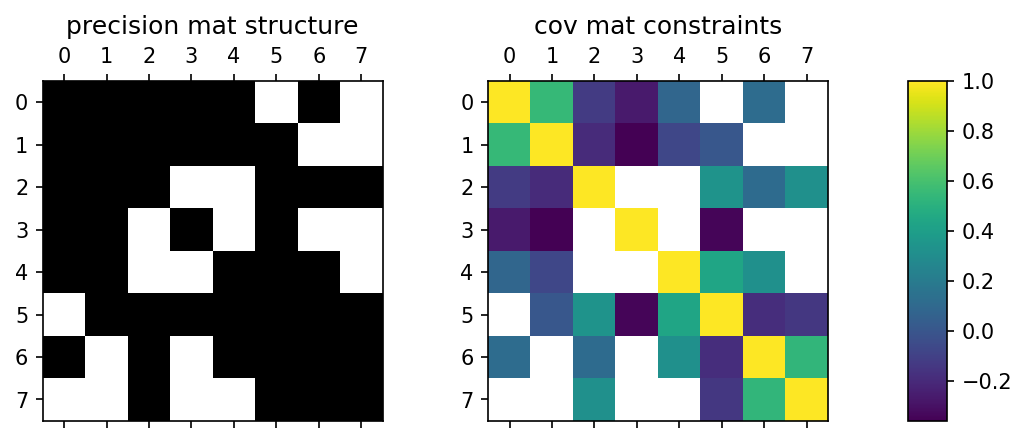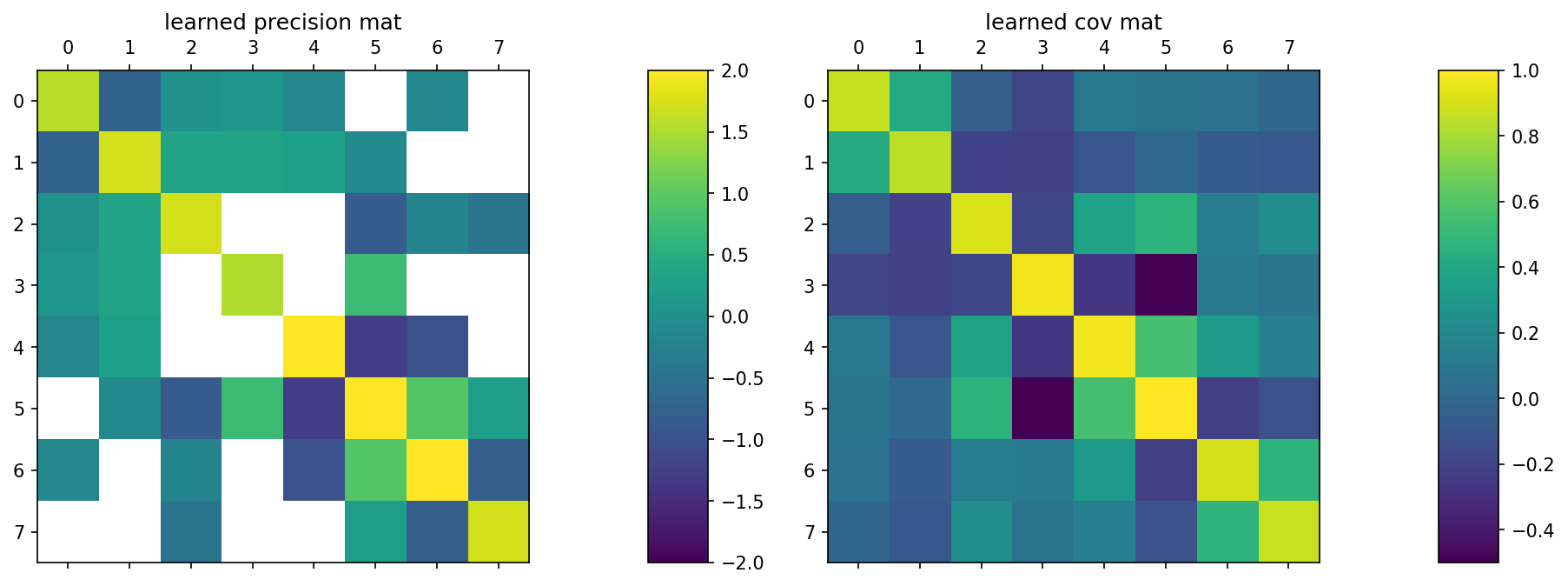This is the source repo. for the tfConstrainedGauss Python package. It is a TensorFlow package for finding the interactions in a Gaussian graphical model with given and fixed structure from constraints on the precision matrix.
A detailed write up is below in the about section, or can also be found in the PDF in the latex folder.
See the examples directory for an explanation of this image.
-
Install:
pip install tfConstrainedGauss -
See the example notebook.
-
Read the documentation.
TensorFlow 2.5.0or later. Note: later versions not tested.Python 3.7.4or later.
Use pip:
pip install tfConstrainedGauss
Alternatively, clone this repo. and use the provided setup.py:
pip install .
See the dedicated documentation page.
See the notebooks in the example directory.
Tests are run using pytest and are located in tests.
This repo. implements a TensorFlow package for finding the interactions in a Gaussian graphical model with given and fixed structure from constraints on the precision matrix.
A detailed write up can also be found in the PDF in the latex folder.
Given an n x n covariance matrix, here of size n=3:
C = (
c11 c12 c13
c12 c22 c23
c13 c23 c33
)
and given the structure of the precision matrix (i.e. given the Gaussian graphical model), for example:
P = (
p11 p12 0
p12 p22 p23
0 p23 p33
)
(note that the diagonal elements are always non-zero).
Example:
The goal is to find the elements of the precision matrix by:
P* = argmin | P.C - I|
where I is the identity.
Example:
The advantage of this approach is that it does not require calculating the inverse of any matrix, particularly important for large n.
The disadvantage of this approach is that the solution found for P may not yield a covariance matrix P^{-1} whose individual elements are close to those of C. That is, while P.C may be close to the identity, there are likely errors in every single element of P^{-1}.
Given the structure of the n x n precision matrix (i.e. given the Gaussian graphical model), for example:
P = (
p11 p12 0
p12 p22 p23
0 p23 p33
)
(note that the diagonal elements are always non-zero), and given the covariances for corresponding to every non-zero entry in P, i.e. given:
c11, c12, c22, c23, c33
the goal is to find the elements of P. In other words, every unique element (i,j) of the n x n symmetric matrix has a given constraint, either to a value in the covariance matrix, or a zero entry in the precision matrix.
This is a maximum entropy (MaxEnt) setup. The elements of the precision matrix pij are directly the interactions in the Gaussian graphical model; the moments they control in a MaxEnt sense are the covariances cij.
The problem can be solved in a number of ways, for example using Boltzmann machine learning, where we minimize:
P* = argmin DKL = argmin \sum_n p(n) [ \ln p(n) / q(n) ]
where p(n) is the (unknown) data distribution that gave rise to the given covariances cij and q(n) is the Gaussian with precision matrix P. The gradients that result are the wake sleep phase:
Delta pij ~ cij - (P^{-1})_{ij}
In TensorFlow, we minimize the MSE loss for the individual terms, which results in the same first order gradients:
P* = argmin \sum_{ij} || cij - (P^{-1})_{ij} ||_2
To learn each element of the covariance matrix with equal importance, we can use a weighted MSE loss:
P* = argmin \sum_{ij} wij || cij - (P^{-1})_{ij} ||_2
where
wij = 1 / cij^2
A detailed write up can also be found in the PDF in the latex folder.
